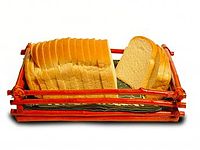
Photo from wikipedia
Bromate, a possible human carcinogen, can be reduced to innocuous bromide by microorganisms. To characterize bromate reducers, microbes were enriched anaerobically from activated sludge by using bromate as the sole… Click to show full abstract
Bromate, a possible human carcinogen, can be reduced to innocuous bromide by microorganisms. To characterize bromate reducers, microbes were enriched anaerobically from activated sludge by using bromate as the sole electron acceptor and different carbon sources as the electron donor. Bacteria that showed significant bromate-reducing activity but not coupled to cell growth were isolated. Two whole genomes of the isolates, namely, Raoultella electrica Lac1 and Klebsiella variicola Glu3, were reconstructed by Illumina and Nanopore sequencing. Transcriptomic analysis suggested that neither the respiratory nitrate reductase, the selenate reductase, nor the dimethylsulfoxide reductase was involved in the bromate reduction process, and strain K. variicola Glu3 reduced bromate via a yet undiscovered enzymatic mechanism. The results provide novel phylogenetic insights into bromate-reducing microorganisms and clues in putative genes encoding enzymes related to bromate reduction.
Journal Title: Frontiers in Microbiology
Year Published: 2022
Link to full text (if available)
Share on Social Media: Sign Up to like & get
recommendations!